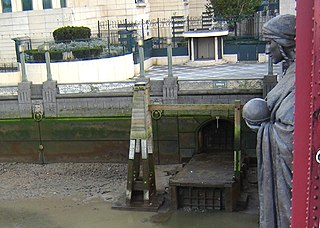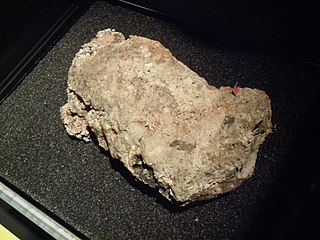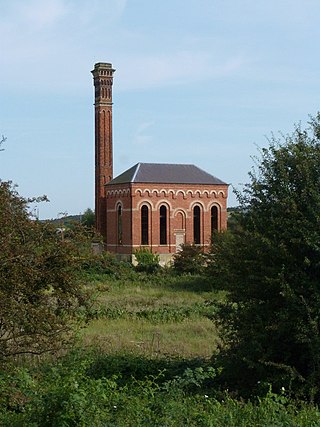
Lanes Group plc are a British civil engineering group specialising in drainage and sewerage repair and railway works.

Lanes Group plc are a British civil engineering group specialising in drainage and sewerage repair and railway works.
The principal activities of the group are drainage and sewerage repair as Lanes for Drains, trenchless repair of sewers and drains as Lanes Reline [1] and civil engineering for railways, trams and the London Underground as Lanes Group Rail Division. [2] The firm has completed work for the Crossrail project. [3]
Lanes Group was formed in Leeds in 1992 [4] as a drain cleaning and repair specialist at which time they employed just five people.
In 2010, Lanes Assistance Services, a claims management company owned by the group, was the subject of a £12 million management buyout backed by private equity firm Gresham. [5]
In 2013, the firm won a £750 million contract to provide emergency blockage clearance and remedial drainage work to Thames Water in north London and the Thames Valley. [6]
In April 2014, it was announced that Lanes had become the first British company to carry out a no-dig lateral junction (known as a top hat) repair on a wastewater network sewer. [7]
In 2014, it was announced that Lanes were one of the contractors that would help refit 70 London Underground stations over seven years in a £330 million programme. [8]
To date the company exists as the largest UK Waste Water Utility Solutions provider with c. £60 million in capital asset
In 2017 Lanes Utilities discovered the largest ever fatberg in history, located in Whitechapel, East London, it is thought to be 250 metres long, weighing 130 tonnes, which took specialist sewer working 3 weeks to clear. Coverage on the story gained worldwide interest. The story has reached over a billion people from more than 115 countries. The Fatberg was discover as part of routine maintenance carried out for water company giant, Thames Water, in which the company operates and maintains 109,000 km of underground network asset across a land mass of 5,000 square miles.
Subterranean London refers to a number of subterranean structures that lie beneath London. The city has been occupied by humans for two millennia. Over time, the capital has acquired a vast number of these structures and spaces, often as a result of war and conflict.

Sewerage is the infrastructure that conveys sewage or surface runoff using sewers. It encompasses components such as receiving drains, manholes, pumping stations, storm overflows, and screening chambers of the combined sewer or sanitary sewer. Sewerage ends at the entry to a sewage treatment plant or at the point of discharge into the environment. It is the system of pipes, chambers, manholes, etc. that conveys the sewage or storm water.

The River Effra is a former set of streams in south London, England, culverted and used mainly for storm sewerage. It had been a tributary of the Thames. Its catchment waters, where not drained to aquifer soakaways and surface water drains, have been incorporated into 1850s-built combined sewer sectors, devised by Sir Joseph Bazalgette. One drains Peckham, the other Brixton, then intended to flow towards Peckham. These generally flow east to be treated at Crossness.

Sir Joseph William Bazalgette CB was a British civil engineer. As Chief Engineer of London's Metropolitan Board of Works, his major achievement was the creation of a sewerage system for central London which was instrumental in relieving the city of cholera epidemics, while beginning to clean the River Thames. He later designed Hammersmith Bridge.

A sanitary sewer is an underground pipe or tunnel system for transporting sewage from houses and commercial buildings to a sewage treatment plant or disposal. Sanitary sewers are a type of gravity sewer and are part of an overall system called a "sewage system" or sewerage. Sanitary sewers serving industrial areas may also carry industrial wastewater. In municipalities served by sanitary sewers, separate storm drains may convey surface runoff directly to surface waters. An advantage of sanitary sewer systems is that they avoid combined sewer overflows. Sanitary sewers are typically much smaller in diameter than combined sewers which also transport urban runoff. Backups of raw sewage can occur if excessive stormwater inflow or groundwater infiltration occurs due to leaking joints, defective pipes etc. in aging infrastructure.

The London sewer system is part of the water infrastructure serving London, England. The modern system was developed during the late 19th century, and as London has grown the system has been expanded. It is currently owned and operated by Thames Water and serves almost all of Greater London.

Stamford Brook was a tributary of the Tideway stretch of the River Thames in west London supplied by three headwaters. Historically used as an irrigation ditch or dyke, the network of small watercourses had four lower courses and mouths.

The Thames Tideway Tunnel is a 25 km (16 mi) combined sewer under construction, running mostly under the tidal section (estuary) of the River Thames across Inner London to capture, store and convey almost all the raw sewage and rainwater that currently overflows into the estuary. These events occur when rainfall volumes exceed the capacity of Bazalgette's and other engineers' London sewerage system. The tunnelling phase of the project was completed in April 2022.

The Great Stink was an event in Central London during July and August 1858 in which the hot weather exacerbated the smell of untreated human waste and industrial effluent that was present on the banks of the River Thames. The problem had been mounting for some years, with an ageing and inadequate sewer system that emptied directly into the Thames. The miasma from the effluent was thought to transmit contagious diseases, and three outbreaks of cholera before the Great Stink were blamed on the ongoing problems with the river.

Anglian Water is a water company that operates in the East of England. It was formed in 1989 under the partial privatisation of the water industry. It provides water supply, sewerage and sewage treatment to the area formerly the responsibility of the Anglian Water Authority. The remaining functions of the authority were transferred to the Environment Agency. Anglian Water is regulated under the United Kingdom Water Industry Act 1991.

Thames Water Utilities Ltd, known as Thames Water, is a large private utility company responsible for the water supply and waste water treatment in most of Greater London, Luton, the Thames Valley, Surrey, Gloucestershire, north Wiltshire, far west Kent, and some other parts of England; like other water companies, it has a monopoly in the regions it serves.

A combined sewer is a type of gravity sewer with a system of pipes, tunnels, pump stations etc. to transport sewage and urban runoff together to a sewage treatment plant or disposal site. This means that during rain events, the sewage gets diluted, resulting in higher flowrates at the treatment site. Uncontaminated stormwater simply dilutes sewage, but runoff may dissolve or suspend virtually anything it contacts on roofs, streets, and storage yards. As rainfall travels over roofs and the ground, it may pick up various contaminants including soil particles and other sediment, heavy metals, organic compounds, animal waste, and oil and grease. Combined sewers may also receive dry weather drainage from landscape irrigation, construction dewatering, and washing buildings and sidewalks.

Southern Water is the private utility company responsible for the public wastewater collection and treatment in Hampshire, the Isle of Wight, West Sussex, East Sussex and Kent, and for the public water supply and distribution in approximately half of this area. Some areas within the Southern Water region are supplied by a number of smaller water supply companies. Southern Water supplies an area totalling 4,450 sq. km. and serves 2.26 million customers.

Pennon Group plc is a British water utility company based in Exeter, England. The company is listed on the London Stock Exchange and is a constituent of the FTSE 250 Index. 83% of the company's profits come from its subsidiary, South West Water.
Public water supply and sanitation in the United Kingdom is characterised by universal access and generally good service quality. A salient feature of the sector in the United Kingdom compared to other developed countries is the diversity of institutional arrangements between the constituting parts of the UK, which are each described in separate articles, while this article is devoted to some common issues across the United Kingdom.
A regional water authority, commonly known as a water board, was one of a group of public bodies that came into existence in England and Wales in April 1974, as a result of the Water Act 1973 coming into force. This brought together in ten regional units a diverse range of bodies involved in water treatment and supply, sewage disposal, land drainage, river pollution and fisheries. They lasted until 1989, when the water industry was privatised and the water supply and sewerage and sewage disposal parts became companies and the regulatory arm formed the National Rivers Authority. Regional water authorities were also part of the Scottish water industry when three bodies covering the North, West and East of Scotland were created in 1996, to take over responsibilities for water supply and sewage treatment from the regional councils, but they only lasted until 2002, when they were replaced by the publicly owned Scottish Water.

The history of water supply and sanitation is one of a logistical challenge to provide clean water and sanitation systems since the dawn of civilization. Where water resources, infrastructure or sanitation systems were insufficient, diseases spread and people fell sick or died prematurely.

Sudbrook and its tributary, the Latchmere stream, are north-flowing streams in London, England, that drain northern Kingston upon Thames and the eastern extreme of Ham following a meander scar in a terrace; the upper part of the Sudbrook drains a narrow vale in Richmond Park's southern corner into the tidal Thames.

A fatberg is a rock-like mass of waste matter in a sewer system formed by the combination of flushed non-biodegradable solids, such as wet wipes, and fat, oil, and grease (FOG) deposits. The handling of FOG waste and the buildup of its deposits are a long-standing problem in waste management, with "fatberg" a more recent neologism. Fatbergs have formed in sewers worldwide, with the rise in usage of disposable cloths. Several prominent examples were discovered in the 2010s in Great Britain, their formation accelerated by aging Victorian sewers. Fatbergs are costly to remove, and they have given rise to public awareness campaigns about flushable waste.

Worksop Waterworks Company, its predecessors and successors have provided a public water supply, together with sewerage and sewage treatment facilities to the town of Worksop since the mid-19th century. Unlike many towns, the sewerage network was constructed before the water supply network, and there was official opposition to the idea of providing a water supply network.
![]() Media related to Lanes for Drains at Wikimedia Commons
Media related to Lanes for Drains at Wikimedia Commons